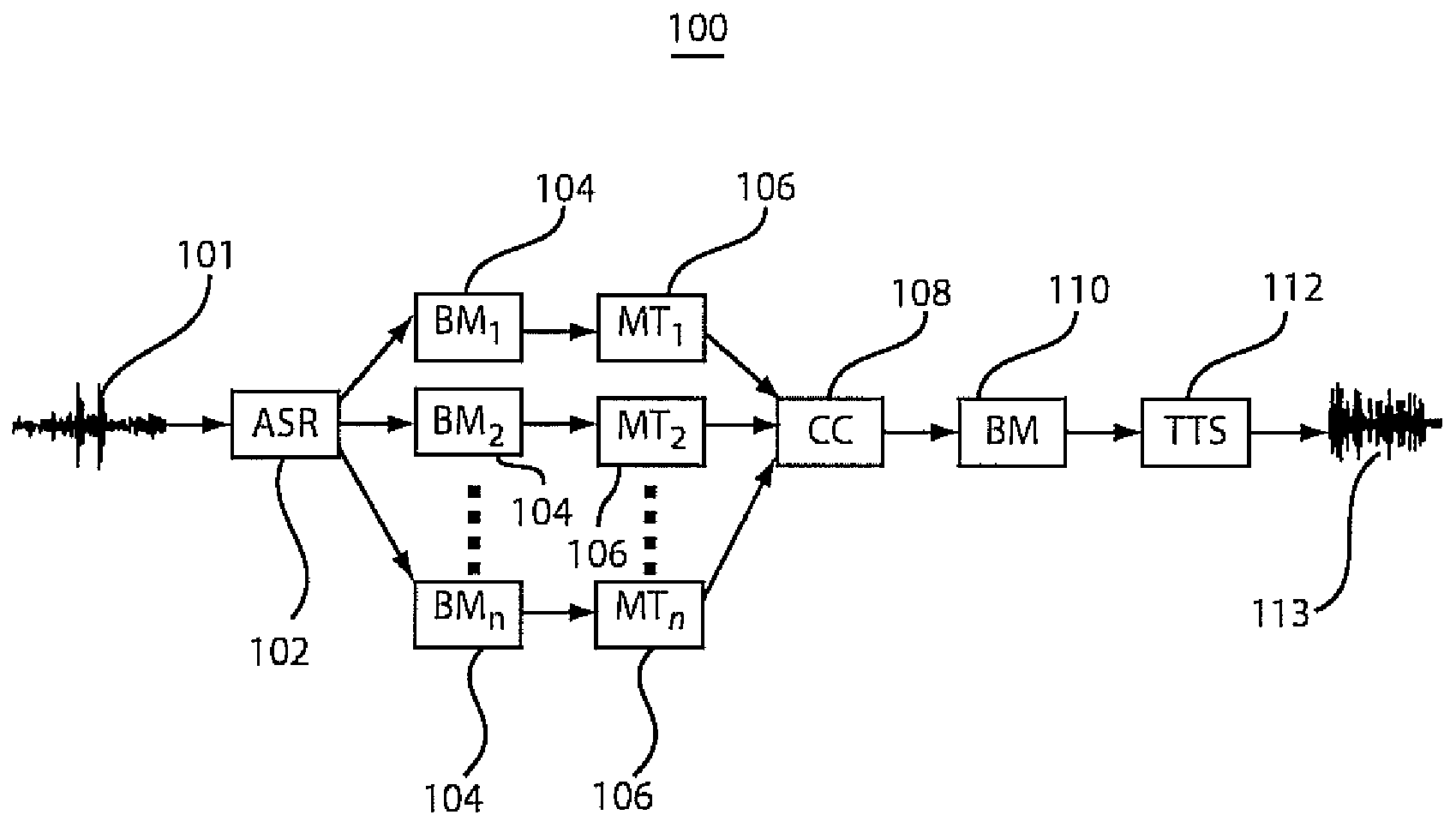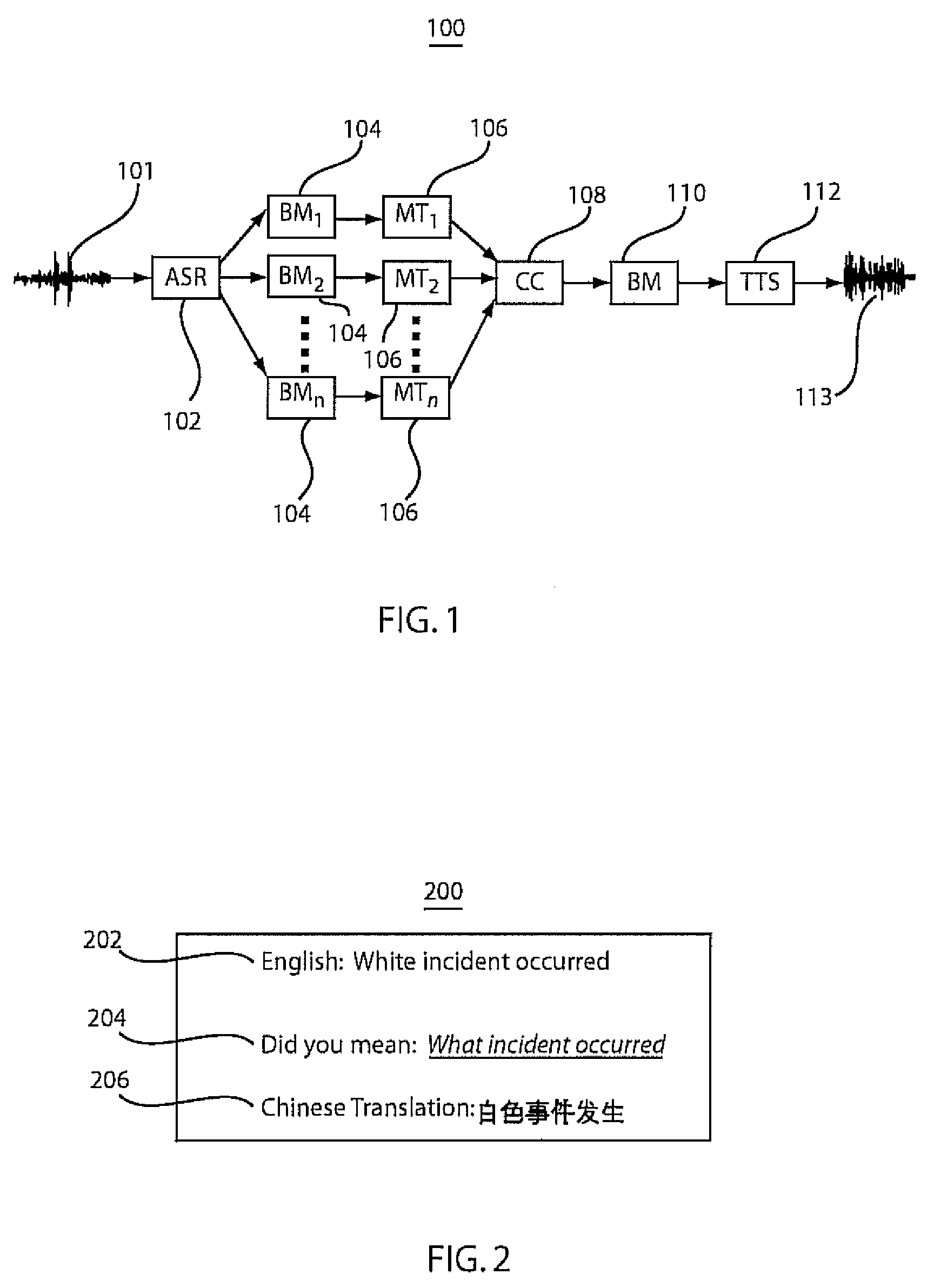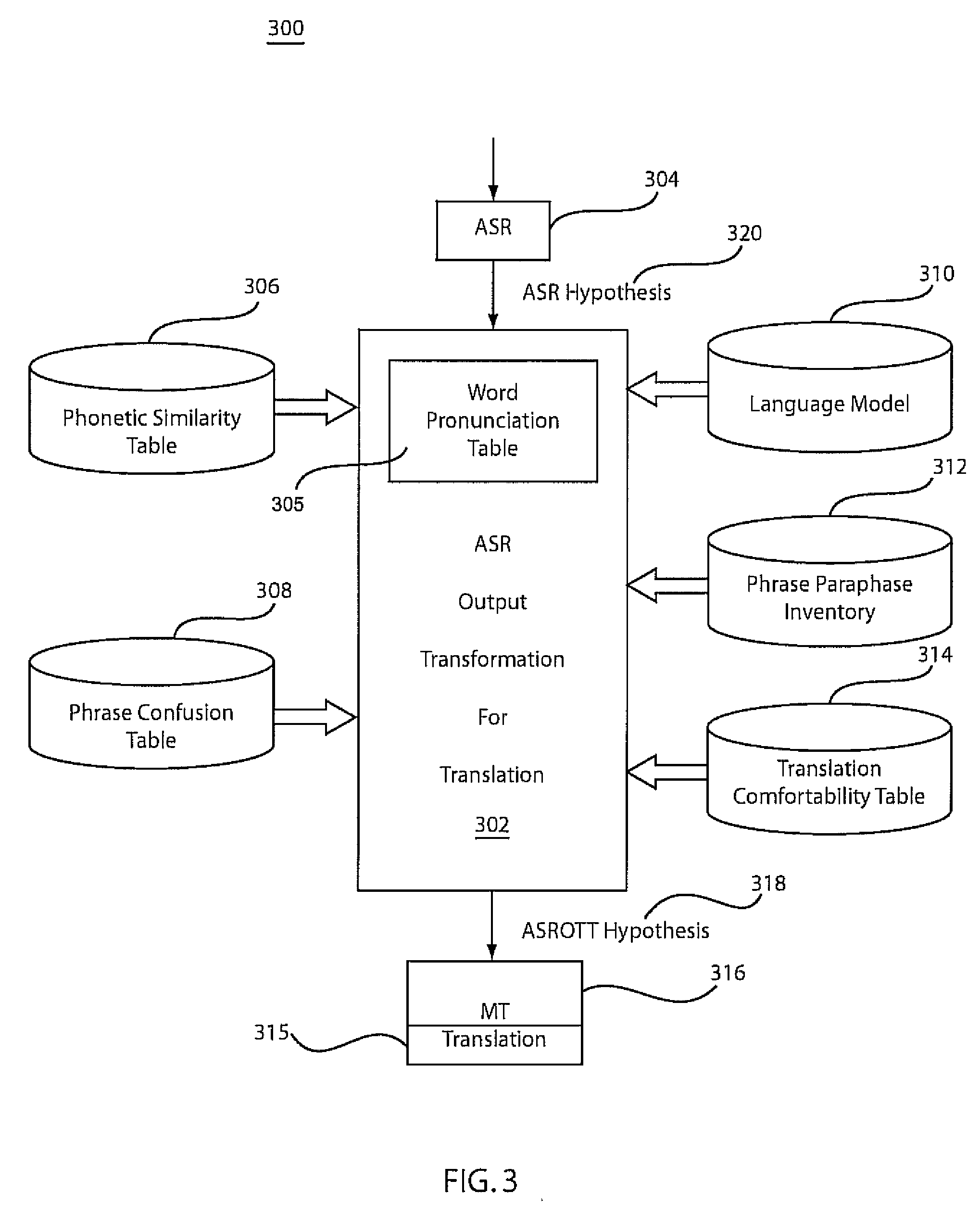System and method for applying bridging models for robust and efficient speech to speech translation
- Summary
- Abstract
- Description
- Claims
- Application Information
AI Technical Summary
Benefits of technology
Problems solved by technology
Method used
Image
Examples
Embodiment Construction
[0023]In accordance with the present principles, a joint optimization of components is provided for efficient and robust concept transfer between end users. The present principles address mismatch between separately optimized modules to directly handle translatability and translation reliability issues of automatic speech recognition (ASR) output in the presence of recognition errors.
[0024]In one embodiment, bridging modules (BM) are included to handle mismatches between components. In particular, a bridging module connects the ASR and a machine translation module (MT). When there are multiple MT modules, separate bridging modules may be needed for each MT engine. A bridging module analyzes ASR hypotheses, performs automatic normalization with knowledge of what can be translated and how reliable the hypotheses can be translated in the following MT module, and then sends the hypotheses to the MT module for translation. A function or model of the bridging module in one application may...
PUM
 Login to View More
Login to View More Abstract
Description
Claims
Application Information
 Login to View More
Login to View More - R&D
- Intellectual Property
- Life Sciences
- Materials
- Tech Scout
- Unparalleled Data Quality
- Higher Quality Content
- 60% Fewer Hallucinations
Browse by: Latest US Patents, China's latest patents, Technical Efficacy Thesaurus, Application Domain, Technology Topic, Popular Technical Reports.
© 2025 PatSnap. All rights reserved.Legal|Privacy policy|Modern Slavery Act Transparency Statement|Sitemap|About US| Contact US: help@patsnap.com



